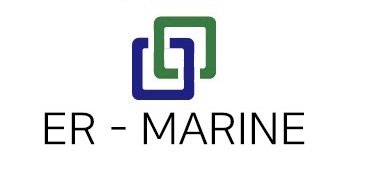Port infrastructure in South Korea - Did you know?
South Korea divides its ports into 31 "Trade ports" and 29 "Coastal ports".
"Trade port" means a port that is closely related to the national economy and the public interest, as a port where outward-going vessels enter and depart.
Trade ports subdivide for systematic and efficient management and operation, considering import and export volumes, development plans, and regionally balanced development.
Central government-managed trade port:
A port that has a significant relationship with the interests of the country, such as handling cargo in the hinterland of the metropolitan area as a base for domestic and overseas land and sea transportation networks or supporting key industries.
Local government-managed trade port:
A port whose main purpose is to handle cargo necessary for local industries as a base for the land and sea transportation networks of each region.
"Coastal port" means a port where vessels operating mainly between domestic ports enter and depart.
Coastal ports are subdivided into the following ports, considering local conditions, characteristics, and port functions, to ensure efficient management and operation:
Central government-managed coastal ports:
Ports that are important for national security or territorial sea management, or whose main purpose is to evacuate ships in case of emergencies such as bad weather.
Local government-managed coastal ports:
Ports whose main purpose is to handle cargo necessary for local industries, promote benefits such as passenger transportation, and support tourism revitalization.
Port hinterland complex:
An area is designated as a port hinterland complex to promote the added value of the port, revitalize port-related industries, seek the benefit of port users, collectively install supporting facilities and port-friendly facilities in the port area, and enhance the functionality of these facilities.
There are two types of the Port Hinterland complex:
A Type 1 port hinterland complex:
A port hinterland complex will be established to enhance the value of the port and revitalize port-related industries. This will be achieved by collectively installing and fostering support facilities and harbor-friendly infrastructure in the port area of the trade port.
Type 2 port hinterland complex:
A port hinterland complex to enhance the functions of the port and the type 1 port hinterland complex and to benefit the people who use the port by installing facilities such as general business facilities, sales facilities, and residential facilities in the port area.
Picture courtesy Busan Port Authority
Port Master Plan:
MOF* shall establish a port master plan on a 10-year basis in order to promote the development of ports and to operate ports efficiently. MOF shall review the validity of the Port Master Plan every 5 years and may change the Port Master Plan if necessary. *(Ministry of Oceans and Fisheries)
Contents of the Port Master Plan:
Matters concerning the division of ports and their locations,
Matters related to the management and operation plan of the port,
Matters concerning the future demand for port facilities,
Matters concerning the supply of port facilities,
Matters concerning the scale and development period of port facilities,
Matters relating to the use, function, improvement, and maintenance of port facilities,
Matters concerning the establishment of a connected transportation network,
Concerns regarding the areas where port facilities are planned to be installed.
With an offshore wind target of 14.3 GW by 2030, we need a developed port infrastructure with sufficient staging and construction areas to bring these planned offshore wind projects to reality.
ER - MARINE floating offshore wind South Korea has been performing detailed port suitability assessments for bottom-fixed and floating offshore wind projects since 2020. Our expertise not only navigates but also bridges the gap between current capabilities and the identified infrastructure needs for future development.
Connect with us to learn how ER-Marine can leverage this nuanced understanding for your offshore wind projects, turning potential challenges into opportunities for growth.
https://www.er-marine.com/
#offshorewind #southkorea #portsandterminals #ermarine
Source: Port Act, 24 October 2023, effective 25 April 2024


